Before they headed back to school, we asked our summer lab staff if they could share their favourite object from their summer washing and cataloguing.
Thanks for sharing your favourites with us and good luck at school this year! We will miss seeing you four around the office. And now, without further ado, here are the objects you’ve been waiting to see!
Danielle Bella: Red Glass Vial Fragment
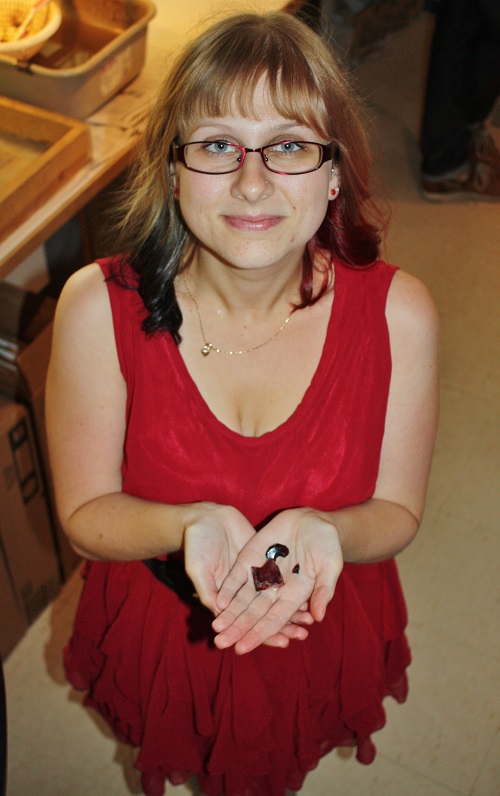

This is the fourth summer I’ve been fortunate to work at ASI, and it has really helped me to figure out my archaeological interests. I’ve decided to specialize in glass! Not only can glass vessels be informative to the archaeological record, they can be very beautiful also. When Katie washed a small, hexagonal, blood red glass vial she knew she had to show it to me. She was right! That combination of glass is not something I see every day in this lab and I was very excited to see it. This vial’s beautiful colour and small opening indicates it was probably a cosmetic bottle, likely for perfume.
The qualities that attracted me to this artifact, the beautiful deep red colour and delicate shape, are the same traits that indicate that this was a luxury object. So, basically I have expensive taste!
Kyle Forsythe: Middle Archaic Point

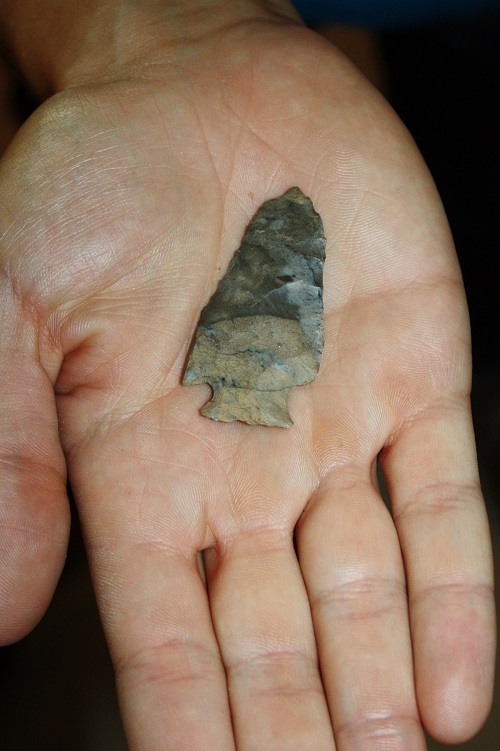
I have worked in both the field and the lab for ASI, so I have witnessed both the excavation of artifacts, and their transition into the clean and organized specimens that we send to analysis. Washing artifacts is a repetitive task, but it also requires a high degree of attention. Some pieces, like 19th century ceramics, are fairly strong and can be washed with a toothbrush and water. Other artifacts like leather or fabrics need much more gentle handling. Organic materials, like animal bones, are given special care to prevent hazards like mould.
This summer we have been working almost exclusively on historic sites, but my personal passion is pre-contact stone artifacts. Fortunately, many historic sites also have lithic components. My favourite artifact from this summer is a large Middle Archaic projectile point that was found at a nineteenth century farm site in York. Finding these artifacts together contributes layers of cultural meaning and considerable depth to the human occupation of Ontario.
Katie Anderson: Sleigh Bells

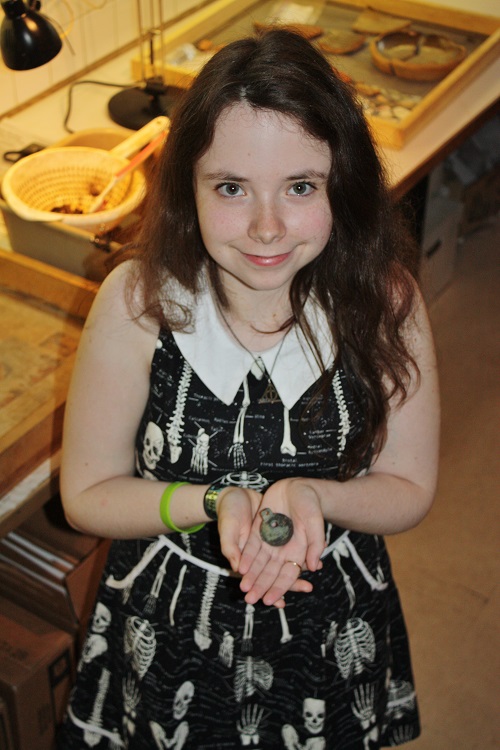
Working at ASI has been a great experience. It was a real pleasure to be able to work with artifacts everyday and
be exposed to some really interesting and unique finds. These past months have definitely improved my knowledge of historic artifacts. Surprisingly, the type of artifact class that I am much better at identifying now are nails. Nails are ubiquitous, but are also a great way to determine the age of a site. Sorting rusty nails I washed into categories all summer has certainly paid off! My favourite artifact was a pair of sleigh bells that were excavated in Durham. When we unpacked the bells their centers were filled with dirt, but after washing them we discovered that they still jingled! It is amazing to find an artifact so intact after well over a century in the ground.
Thank you so much to everyone I’ve met at ASI this summer for being so nice and making this a great summer.
Sara-Lyn Forman: Two-Face Pipe Bowl
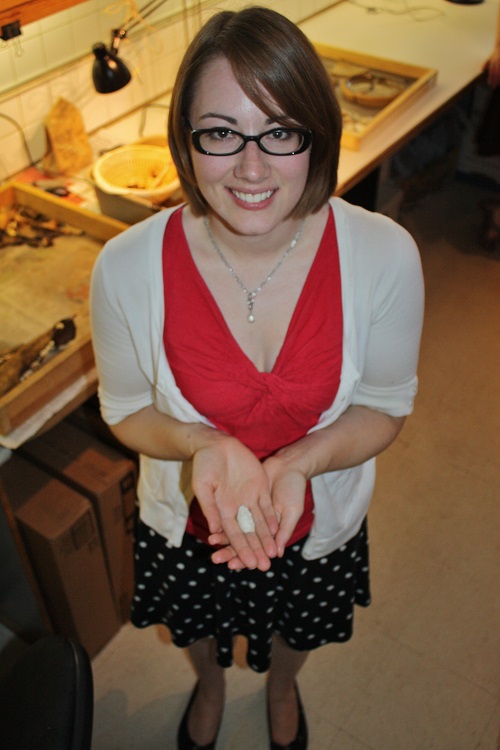
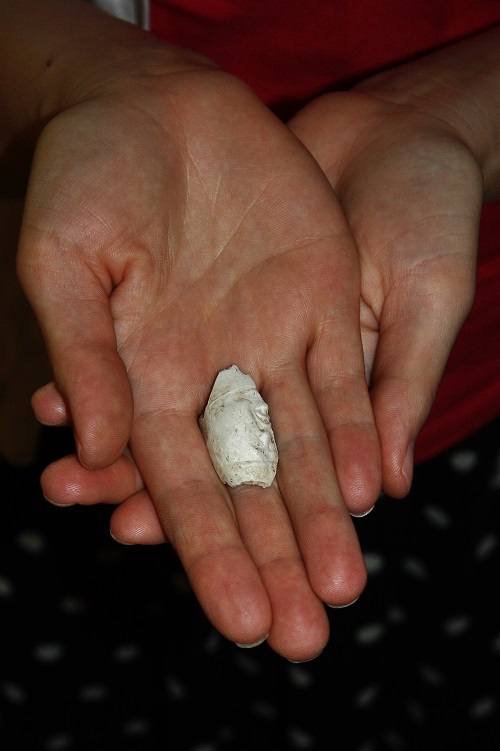
Working in the lab at ASI is always exciting because it provided me the opportunity to see a wide range of artifacts from many different sites. Interesting items always turn up during the washing process. One of the most memorable items I encountered recently was a unique portion of a clay smoking pipe bowl. Historical pipes are fairly common, but I remember noticing that this particular bowl fragment had a sad face on it…
As I was washing it, I flipped it upside down and I was amazed to find the sad face had become a happy one! It is unique items like that two-face pipe bowl that make archaeology so fascinating to me. You never know what small piece of history you will unearth next.
(Side note: We photographed the two-face pipe in our office this summer for a feature on Facebook. You can really see the detail in this bowl fragment!)


